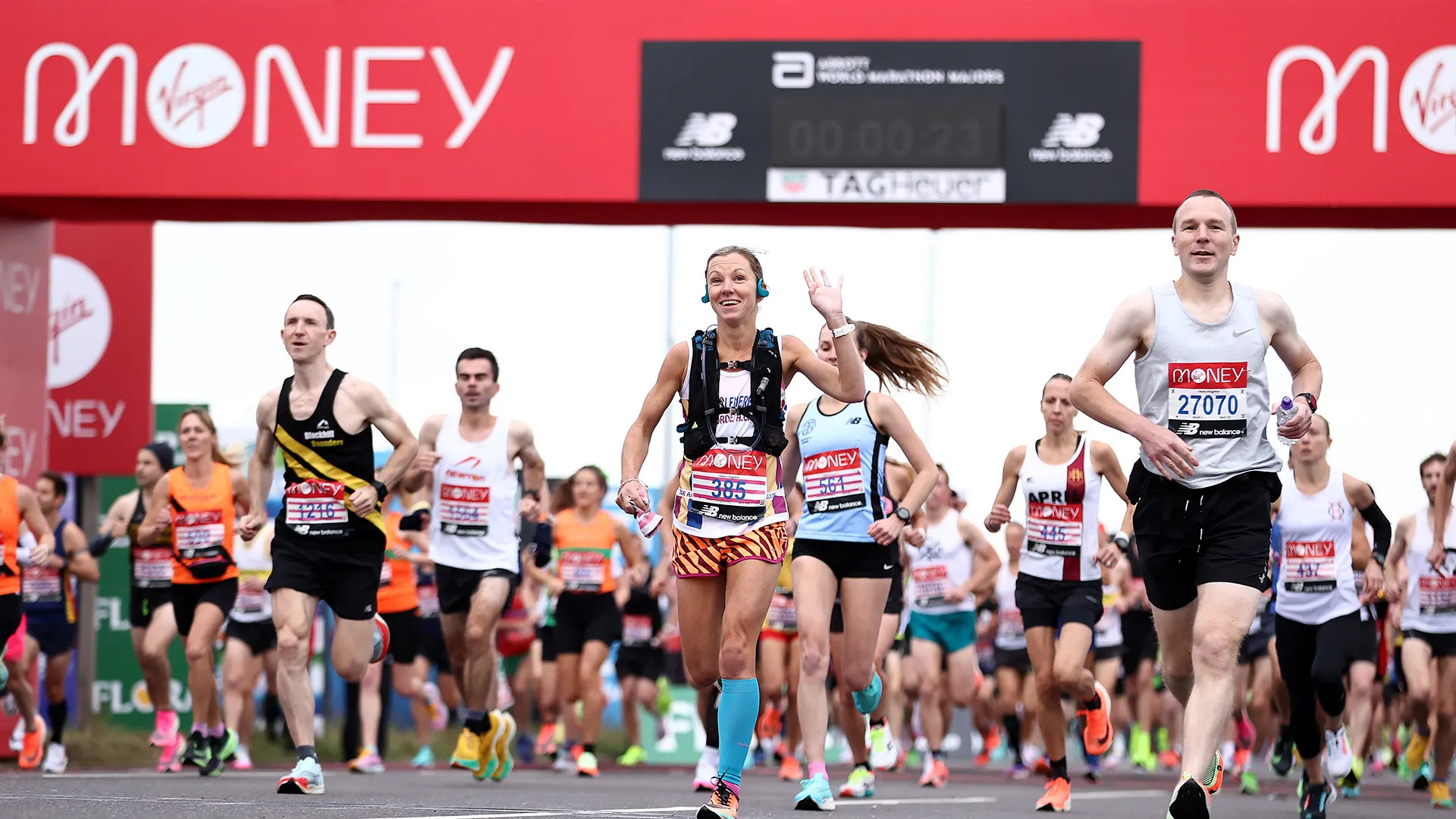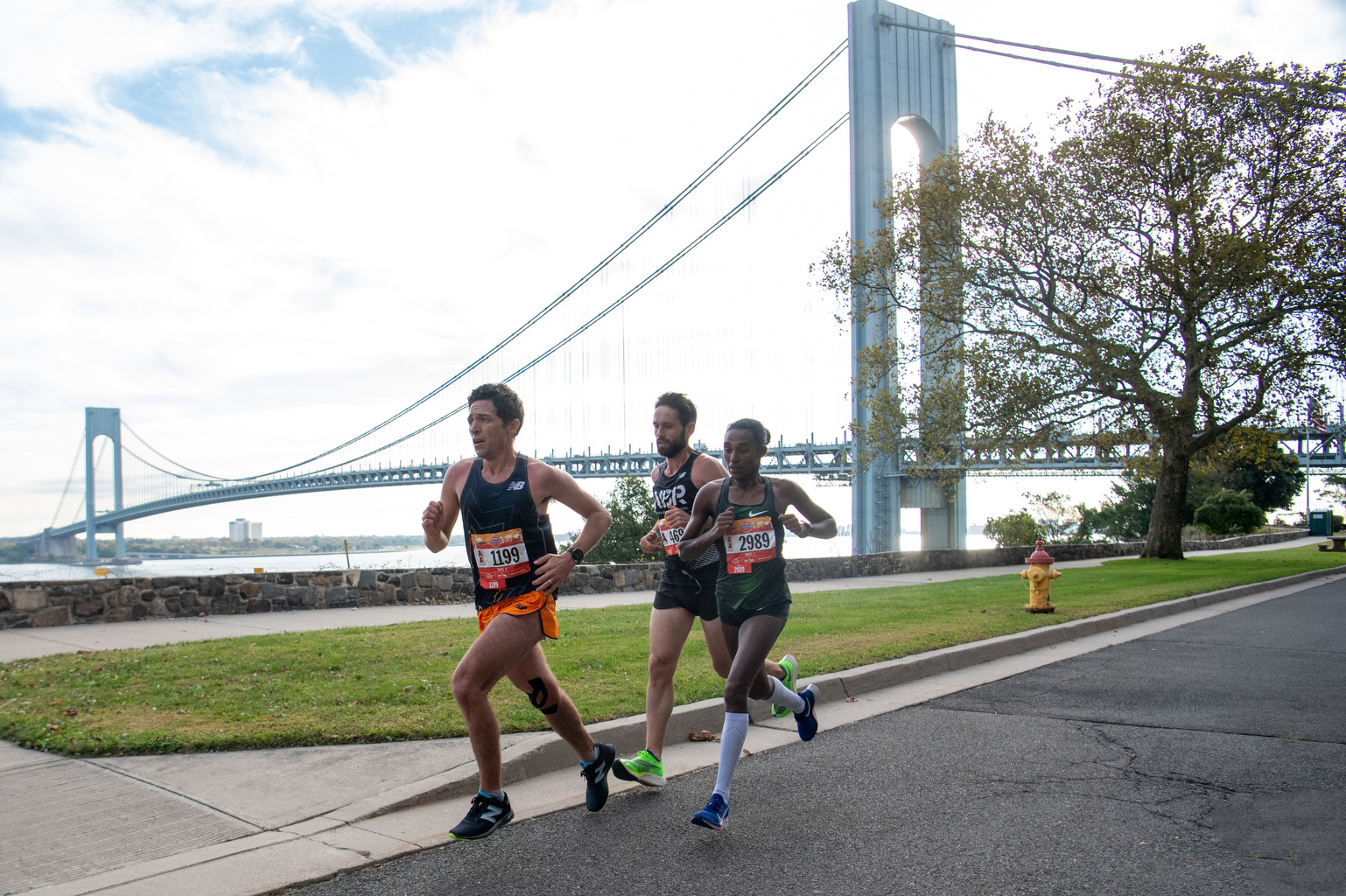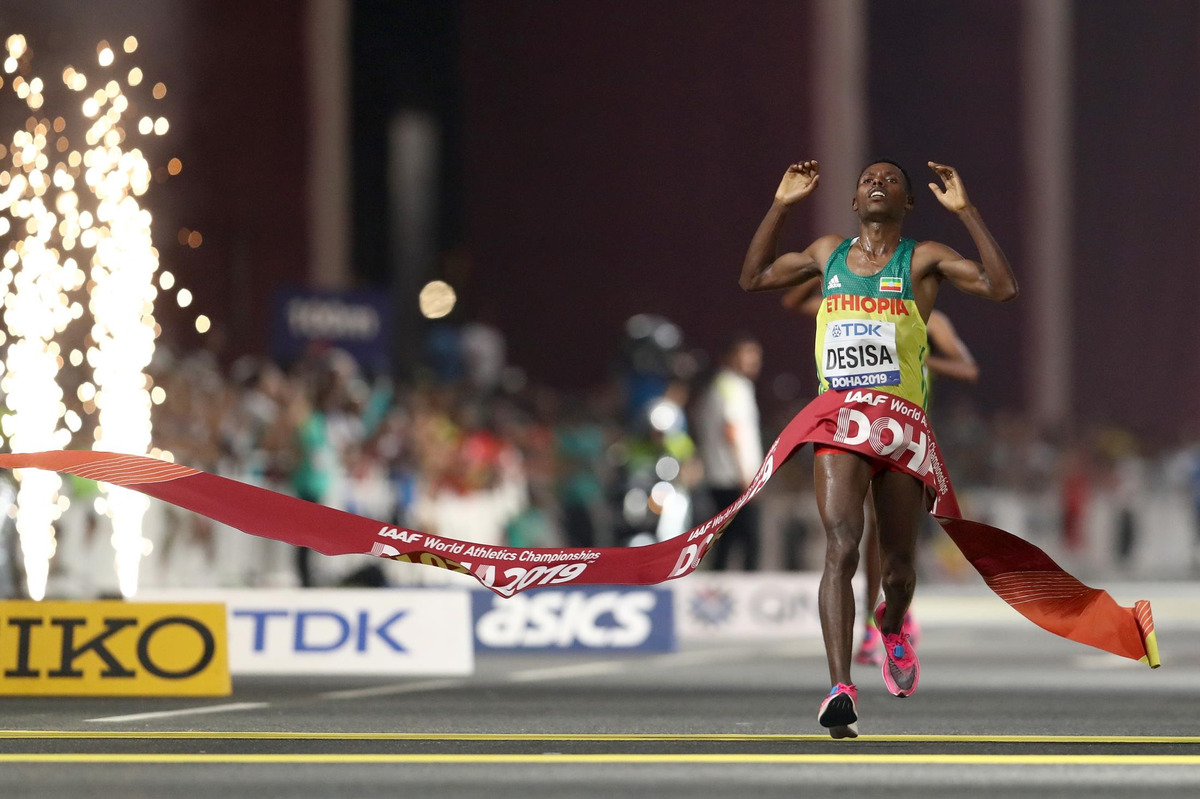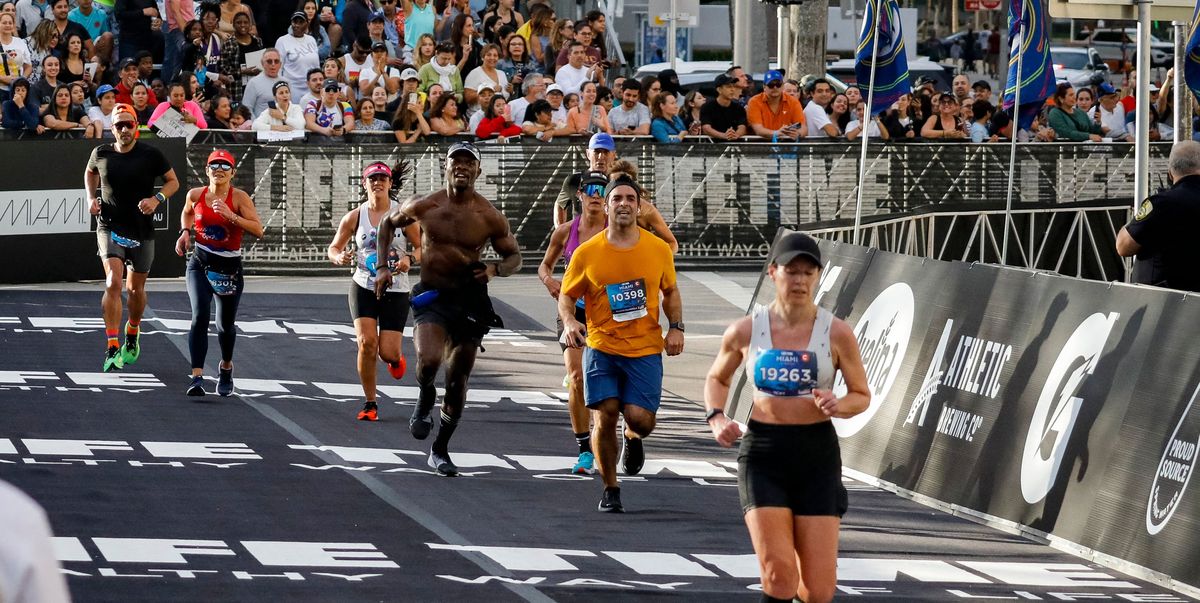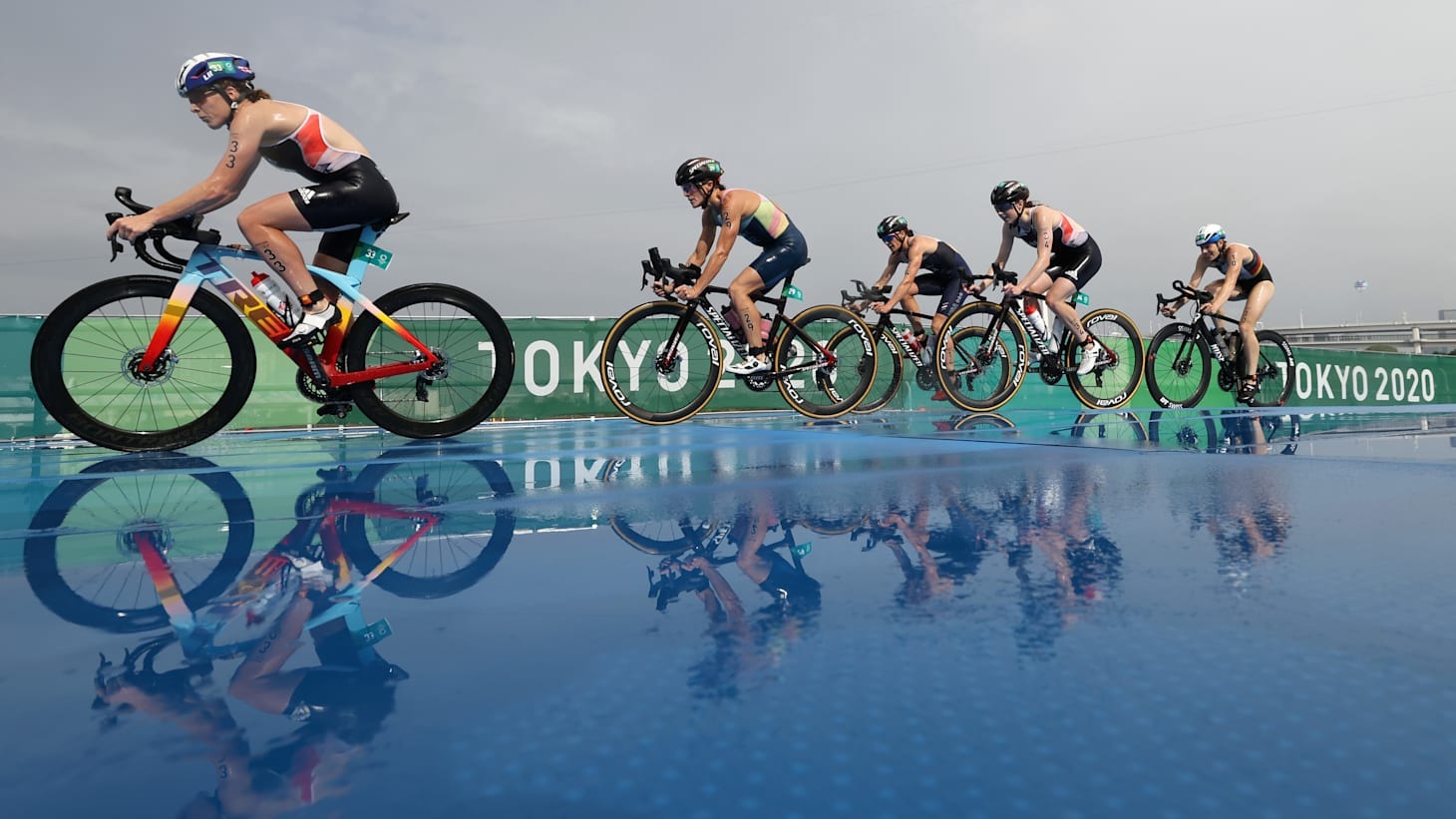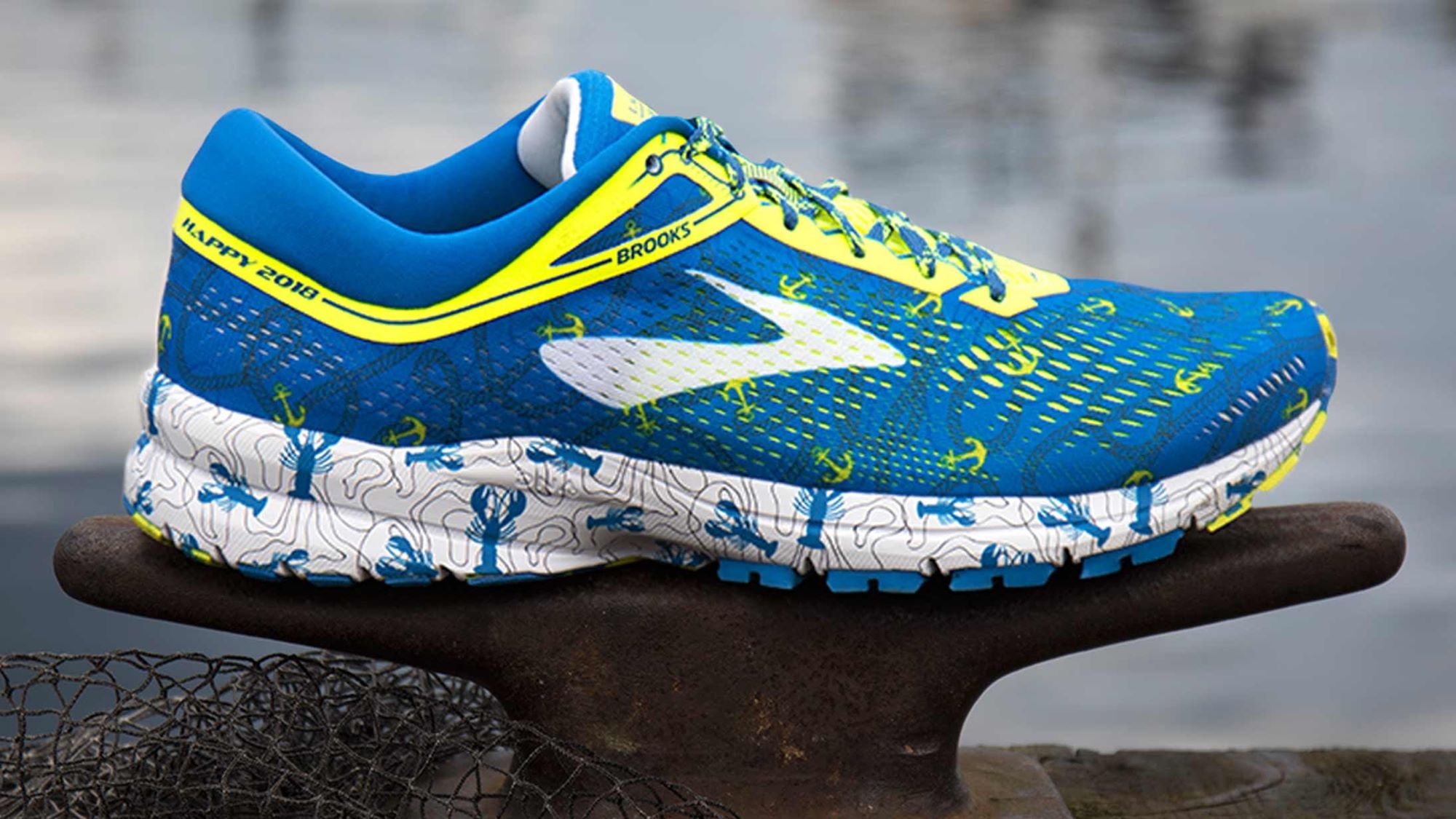

Featured
What Is The Longest Marathon
Modified: January 22, 2024
Discover the captivating story of the world's longest marathon in this featured article. Explore the endurance, determination, and incredible achievements of marathon runners pushing their limits.
Introduction
Welcome to the world of marathons, where endurance, determination, and passion come together to create an exhilarating and challenging experience. A marathon is not just a race; it is a journey that tests the limits of the human body and spirit.
Marathons are long-distance running events that cover a distance of 42.195 kilometers. These races attract thousands of participants from around the world, each with their own unique motivation and personal goals. Whether it’s crossing the finish line, setting a personal record, or simply embracing the joy of running, marathons have become a popular event that captures the imagination of runners and onlookers alike.
The origins of the marathon can be traced back to ancient Greece, where the legendary tale of Pheidippides has become the stuff of legend. According to the story, Pheidippides, a Greek messenger, ran from the city of Marathon to Athens to announce the victory of the Greeks over the Persians in the Battle of Marathon. Upon reaching his destination, he exclaimed “Nenikēkamen!” which translates to “We have won!” before collapsing and dying from exhaustion.
The modern marathon race as we know it today began with the revival of the Olympic Games in 1896. The first Olympic marathon took place in Athens, Greece, following the route of Pheidippides’ historic run. Since then, marathons have continued to grow in popularity and have become a symbol of human achievement and resilience.
Marathons are more than just physical tests; they also have the power to bring communities together. From the cheering spectators lining the streets to the countless volunteers who provide water and support along the way, marathons foster a sense of camaraderie and unity. It’s a celebration of not only the individual runner but also the collective spirit of the race.
In this article, we will dive deeper into the fascinating world of marathons. We will explore the history and evolution of marathon races, discuss some notable marathons around the world, and even discover the challenges and risks involved in long-distance running. So lace up your running shoes and join us on this incredible journey through the marathon world.
Definition of Marathon
Before we delve into the intricacies of marathons, let’s start with a clear understanding of what a marathon actually is. Officially, a marathon is a long-distance running event that covers a total distance of 42.195 kilometers, or approximately 26.2 miles. It is a test of both physical endurance and mental fortitude, requiring runners to push themselves to their limits.
The distance of 42.195 kilometers was not chosen arbitrarily. It is believed to have originated during the 1908 London Olympic Games. The race was originally planned to cover a distance of 25 miles, but it was extended an additional 385 yards to ensure that the finish line was directly in front of the royal box. This distance became the standardized marathon distance that is recognized worldwide today.
Marathons are typically conducted as road races, with runners following a predetermined route through city streets or scenic landscapes. However, there are also trail marathons that take place on off-road terrains, adding an extra layer of difficulty and adventure to the race.
Unlike other shorter-distance races, marathons require a significant amount of training and preparation. Runners must build up their endurance and stamina in order to sustain the intensity of the race for an extended period of time. Proper nutrition and hydration are also crucial factors for marathon success, as the body needs fuel to keep going over such a long distance.
In addition to individual marathons, there are also relay marathons where teams of runners divide the distance between them. Each runner completes a portion of the race, passing a baton to the next teammate at designated exchange points. This type of marathon promotes teamwork and camaraderie among participants, as they rely on each other’s support to reach the finish line.
Marathons have gained immense popularity over the years, with races taking place in locations all around the globe. They attract participants from diverse backgrounds, ranging from casual runners to elite athletes. Marathons also offer various categories, allowing participants to compete in age-specific divisions or even for specific causes or charities.
While the physical aspect of marathon running is undoubtedly challenging, the mental aspect should not be overlooked. Running a marathon requires determination, mental focus, and the ability to push through physical pain and fatigue. The sense of accomplishment upon completing a marathon is often described as an indescribable high, making all the training and effort worth it.
Now that we have established the definition of a marathon, let’s explore the fascinating history and evolution of this iconic race in the next section.
History of Marathon
The history of the marathon dates back to ancient times, with roots deeply embedded in Greek mythology and history. The story that serves as the inspiration for the marathon is the famous tale of Pheidippides, a Greek messenger who ran from the city of Marathon to Athens in 490 BCE.
During this time, the Persians invaded Greece, and the Athenians, along with their allies, fought bravely in the Battle of Marathon. The Greek army managed to defeat the Persian forces, and it is said that Pheidippides was sent to deliver the news of their victory to Athens. Pheidippides embarked on the treacherous journey, covering a distance of approximately 40 kilometers or 25 miles.
According to legend, after an exhausting and grueling run, Pheidippides finally reached Athens. He shouted, “Nenikēkamen!” which translates to “We have won!” before collapsing and dying from exhaustion. It is this story that has been perpetuated and romanticized as the inspiration behind the modern marathon race.
The revival of the Olympic Games in 1896 in Athens, Greece marked the beginning of the modern marathon era. Inspired by the ancient legend of Pheidippides, the organizers of the games decided to include a marathon race in the event. The course was set to replicate the distance that Pheidippides had run centuries before.
The first Olympic marathon was held on April 10, 1896, and attracted 17 participants from various nations. The race started in the town of Marathon and finished at the Panathenaic Stadium in Athens. Symbolizing the determination and spirit of the ancient Greek messenger, Spiridon Louis, a local Greek athlete, emerged as the winner and became a national hero.
The success of the marathon at the 1896 Olympics sparked a widespread interest in the race. Marathons started to be organized beyond the realm of the Olympic Games, with various countries holding their own marathon events. The Boston Marathon, first held in 1897, became the oldest annual marathon in the world, attracting runners from all corners of the globe.
Over the years, marathons became a platform for athletes to showcase their physical prowess and compete against the best in the world. The marathon has also evolved into a symbolic representation of human determination and the pursuit of excellence.
In the following sections, we will explore the origins of the marathon in more depth and delve further into the evolution of marathon races throughout history. From the streets of ancient Greece to the modern-day marathon spectacles, the history of the marathon is a testament to the endurance and indomitable spirit of mankind.
Origins of the Marathon
The origins of the marathon can be traced back to ancient Greece, a civilization known for its rich history and mythology. The marathon has its roots in the legendary tale of Pheidippides, a Greek messenger who is said to have run from the city of Marathon to Athens to deliver a crucial message.
The story of Pheidippides unfolds during the 5th century BCE when the Persians invaded Greece. The Athenians, together with their allies, faced the Persian forces in the Battle of Marathon. The outcome of this battle was of great significance, as it would determine the fate of Greece.
In a desperate attempt to secure aid from the Spartans, the Athenians dispatched Pheidippides to run the distance of about 40 kilometers (25 miles) from the city of Marathon to Athens. His mission was to deliver the news of the Athenian victory and to request the Spartans’ support.
Pheidippides embarked on an incredible journey, sprinting through rough terrain and conquering treacherous obstacles in a race against time. He pushed his body to the limits, fueled by his unwavering dedication and determination to fulfill his duty. Upon reaching Athens, Pheidippides conveyed the message of victory before collapsing from exhaustion.
This legendary run of Pheidippides has become an enduring symbol of courage, sacrifice, and the triumph of the human spirit. It is this astounding feat of endurance that serves as the inspiration for the modern marathon race.
It is worth noting that the story of Pheidippides was not widely known until centuries later. It was the famous Greek historian Herodotus who first recorded the account around 440 BCE. His writings played a crucial role in immortalizing the tale and ensuring its lasting legacy.
The significance of Pheidippides’ run resonated deeply with the revival of the Olympic Games in Athens in 1896. The marathon race was included in the games to commemorate the ancient Greek messenger, paying homage to his remarkable journey. The course of the marathon race was designed to replicate the distance that Pheidippides had covered centuries before.
Since then, the marathon has evolved into a global phenomenon, captivating the hearts and minds of athletes and spectators from around the world. The origins of the marathon in ancient Greece continue to inspire runners to push beyond their limits, channeling the spirit of Pheidippides as they embark on their own personal marathon journeys.
In the next section, we will explore the evolution of marathon races from the ancient times to the present day, tracing the footsteps of this iconic race as it has transformed and grown throughout history.
Evolution of Marathon Races
From its humble origins in ancient Greece to its global popularity in modern times, the marathon has undergone a remarkable evolution. Throughout history, marathon races have evolved in terms of distance, organization, and participation, reflecting the changing landscape of sports and endurance events.
In the early years of marathon racing, the distance covered varied and was not standardized. It was not until the 1908 London Olympic Games that the 42.195 kilometer (26.2 miles) distance was established as the official length of the marathon. This distance was set to ensure that the race started at Windsor Castle and ended directly in front of the royal box at the Olympic Stadium.
As the popularity of marathons grew, countries around the world began organizing their own races. The Boston Marathon, first held in 1897, became one of the most prestigious and iconic races in the world. Other major marathons, such as the New York City Marathon, the Berlin Marathon, the Tokyo Marathon, and the Chicago Marathon, emerged over the years, attracting elite runners and enthusiastic participants from all corners of the globe.
Advancements in technology and infrastructure have also played a significant role in the evolution of marathon races. Today, marathons are meticulously organized with clearly marked courses, aid stations, medical support, and timing devices to ensure accuracy and fair competition. Runners can now register for races online, access detailed race information, and track their performance using specialized apps and wearable devices.
Marathons have also become more inclusive, welcoming runners of all abilities. In addition to the elite category, marathons offer age group divisions, wheelchair divisions, and even charity or fundraising categories. This diversity of participants adds to the vibrant and inclusive atmosphere of the race.
Furthermore, marathon events have expanded beyond the traditional road race format. Trail marathons, which take place on off-road terrains, have gained popularity, offering a greater challenge and a closer connection with nature. Ultramarathons, races exceeding the traditional marathon distance, have also gained prominence, attracting ultra-endurance athletes who are willing to take on distances of 50 kilometers, 100 kilometers, or even 100 miles.
Spectatorship and media coverage have also transformed the marathon experience. Crowds line the streets, cheering on the runners and creating an electrifying atmosphere. Major marathons are now televised and live-streamed, allowing viewers from around the world to witness the triumphs and struggles of the runners in real-time.
The evolution of marathon races continues to shape the landscape of endurance sports. The popularity and accessibility of marathons have inspired countless individuals to take up running and push their boundaries. These races have become a platform for personal achievements, fostering a sense of accomplishment, perseverance, and community.
In the next section, we will explore some of the most notable marathons around the world, each with its unique characteristics and allure.
Notable Marathons
Marathons are held in numerous cities around the world, each with its own distinct characteristics and allure. These races have become iconic events that attract runners and spectators from all walks of life. Let’s take a closer look at some of the most notable marathons that have captured the imaginations of people worldwide.
-
Boston Marathon
The Boston Marathon, held annually on Patriots’ Day in April, stands as the oldest and one of the most prestigious marathons in the world. First run in 1897, the Boston Marathon traverses a demanding point-to-point course from Hopkinton to Copley Square. The race holds a special place in the hearts of many runners, known for its challenging course and storied history.
-
New York City Marathon
The New York City Marathon, started in 1970, has grown to become one of the largest marathons globally, attracting over 50,000 participants from around the world. The race showcases the vibrant energy of the city as runners navigate the five boroughs, from Staten Island to Manhattan. With a stunning finish in Central Park, the New York City Marathon is a must-do race for many passionate runners.
-
London Marathon
The London Marathon, first held in 1981, has become one of the most popular and iconic marathons on the international running calendar. The race takes runners through the historic streets of London, passing renowned landmarks like the Tower Bridge and Buckingham Palace. With its enthusiastic crowds and exciting atmosphere, the London Marathon offers an unforgettable experience for both elite runners and amateurs alike.
-
Tokyo Marathon
The Tokyo Marathon is renowned for its electrifying atmosphere and organized precision. Established in 2007, this race showcases Tokyo’s metropolitan beauty and rich cultural heritage. Runners can soak in the futuristic cityscape while passing by iconic landmarks like the Imperial Palace and Tokyo Tower. The Tokyo Marathon attracts a large number of international participants vying to experience the unique blend of tradition and modernity.
-
Berlin Marathon
The Berlin Marathon is known for its fast and flat course, making it a favorite among elite runners aiming for personal bests or world records. Founded in 1974, this marathon has witnessed several record-breaking performances, including the current men’s world record set by Eliud Kipchoge in 2018. The race takes runners through the streets of Berlin, passing historical sites like the Brandenburg Gate and the Berlin Wall.
These are just a few examples of the many marathons held worldwide. Other notable marathons include the Chicago Marathon, the Marine Corps Marathon in the United States, the Great Wall Marathon in China, the Paris Marathon in France, and the Comrades Marathon, an ultramarathon in South Africa.
Each marathon offers its own unique combination of scenery, history, and culture, attracting runners with various goals and aspirations. Whether it’s the allure of a prestigious event, the desire to conquer a challenging course, or simply the joy of being part of a vibrant running community, marathons continue to captivate participants and spectators alike.
In the next section, we will explore the efforts and risks involved in long-distance running and discuss the challenges faced by marathon runners.
The Longest Marathon Ever Recorded
Marathons are known for testing the endurance and resilience of runners, but there have been extraordinary individuals who have pushed the boundaries even further. While the standard marathon distance is 42.195 kilometers (26.2 miles), there have been instances when runners have embarked on even longer marathon-like endeavors – ultramarathons. The longest recorded marathon run in history is an astonishing feat that showcases the extraordinary capabilities of the human body and mind.
The Guinness World Record for the longest continuous marathon run by an individual belongs to Dean Karnazes, an ultra-endurance runner from the United States. In 2005, Karnazes ran an astounding distance of 560 kilometers (350 miles) without stopping. This incredible achievement took place in California, where he ran for 3 days, 7 hours, and 21 minutes.
Karnazes’ record-breaking run was not only physically demanding but also mentally challenging. He battled sleep deprivation, hunger, and fatigue throughout the ultra-marathon, relying on sheer determination and mental fortitude to keep going. His achievement illustrates the incredible capacity of the human body to endure grueling challenges and overcome seemingly impossible odds.
Ultramarathons, including the record-breaking run by Karnazes, test the limits of human endurance and pose immense challenges. These races often cover distances far beyond the standard marathon, ranging from 50 kilometers (31 miles) to even 100 miles or more. They require meticulous planning, intense training, and unwavering mental focus.
While ultramarathons may be considered extreme, they attract a dedicated community of runners who thrive on pushing themselves to new limits. These races take participants into uncharted territories, confronting them with physical, mental, and emotional obstacles that must be overcome with sheer determination and willpower.
It is important to highlight that ultramarathons, or any rigorous physical activity, should be approached with caution and under the guidance of experienced trainers and medical professionals. Proper training, nutrition, hydration, and rest are crucial for mitigating the risks associated with long-distance running.
Dean Karnazes’ remarkable achievement showcases the extraordinary capabilities of the human body and the lengths people are willing to go to push their limits. While most marathons adhere to the traditional 42.195 kilometer distance, record-breaking runs like Karnazes’ demonstrate that the marathon spirit transcends boundaries and challenges us to redefine what is possible.
In the following section, we will explore the challenges and risks that marathon runners face, shedding light on the dedication and preparation required for these endurance events.
Challenges and Risks in Long Distance Running
Long-distance running, particularly in marathons and ultramarathons, presents unique challenges and risks that athletes must navigate. While the rewards of crossing the finish line can be incredibly fulfilling, it is essential to acknowledge and understand the potential difficulties faced by runners in these endurance events.
One of the primary challenges in long-distance running is the physical toll it takes on the body. The intense and repetitive nature of running for an extended period can lead to a range of injuries, such as shin splints, stress fractures, tendonitis, and muscle strains. The impact forces exerted with every stride can put significant stress on joints and bones, making proper training and conditioning crucial for injury prevention.
Other challenges arise from the environmental conditions in which marathons are often held. Extreme weather, whether it’s scorching heat or biting cold, can pose a serious risk to runners. Dehydration, heatstroke, hypothermia, and frostbite are all potential dangers if proper precautions are not taken. Hydration and maintaining electrolyte balance are crucial to avoid heat-related illnesses, while appropriate clothing and protection are essential in cold weather conditions.
Long-distance running also demands mental resilience. Endurance events can test the limits of a runner’s mental strength, pushing them to confront fatigue, self-doubt, and emotional highs and lows. Overcoming mental barriers and maintaining focus and motivation throughout the race can be just as challenging as the physical aspect of running.
Proper training and preparation are key to meeting these challenges head-on. Runners must follow a structured training plan that gradually builds endurance and strengthens muscles, allowing the body to adapt to the demands of long-distance running. Incorporating rest days, cross-training, and proper nutrition are essential for maintaining overall fitness and preventing overuse injuries.
Medical support and on-course aid stations play a critical role in mitigating risks during marathons. Volunteers provide water, sports drinks, and energy gels to help runners stay hydrated and fuel their bodies. Medical professionals are present to assess injuries and provide immediate assistance when needed. Runners should be aware of these resources and not hesitate to seek help if they experience any medical distress during the event.
It is important for runners to listen to their bodies and understand their limits. Ignoring pain or pushing through excessive fatigue can lead to serious injuries or health complications. Knowing when to slow down, take breaks, or seek medical attention is critical to protect one’s well-being.
Despite the challenges and risks involved in long-distance running, many athletes find the rewards far outweigh the potential drawbacks. The sense of accomplishment, personal growth, and camaraderie that accompany marathon participation make the journey worthwhile.
In the next section, we will explore the training methods and strategies that can help prepare runners for the physical and mental demands of long-distance marathons.
Training for Long Distance Marathons
Training for a long-distance marathon requires careful planning, perseverance, and a commitment to consistent training. Building the necessary endurance, strength, and mental fortitude to tackle the 42.195 kilometers (26.2 miles) can be both challenging and rewarding. Here are some key training methods and strategies to help prepare for the demands of a long-distance marathon.
Gradual Progression: It is essential to start training gradually and build up mileage over time. Begin with a base running program, focusing on developing a comfortable running pace and building aerobic endurance. Gradually increase the weekly mileage by around 10% to avoid overuse injuries and excessive fatigue.
Long Runs: Incorporating weekly long runs is crucial for building endurance and mental resilience. Increase the distance gradually, aiming to complete one or two long runs per week. These runs simulate the race conditions and help the body adapt to prolonged running.
Speed and Tempo Workouts: Integrate speed and tempo workouts into your training regimen to improve overall running pace and enhance cardiovascular fitness. Interval training, fartlek runs, and tempo runs can help increase running speed and improve lactate threshold, aiding performance during the marathon.
Strength Training: Incorporating strength training exercises can enhance running economy, prevent injuries, and improve overall performance. Focus on exercises that target major muscle groups, including the core, legs, and glutes. Incorporate exercises like squats, lunges, planks, and calf raises to build strength and stability.
Rest and Recovery: Rest and recovery are just as important as training itself. Allow time for adequate rest days and recovery periods to prevent overtraining and reduce the risk of injuries. Listen to your body, and if you experience fatigue or signs of overuse, scale back the training intensity to ensure sufficient rest.
Nutrition and Hydration: Proper nutrition and hydration are crucial for fueling your body during training and the actual marathon. Eat a balanced diet rich in carbohydrates, proteins, and healthy fats to provide the necessary energy and support muscle recovery. Hydrate adequately before, during, and after runs to maintain optimal performance and prevent dehydration.
Mental Preparedness: Long-distance running requires mental fortitude. Incorporate mental training techniques into your routine, such as visualization, positive affirmations, and goal setting. Practice mental strategies during challenging training runs to build resilience and maintain focus during the marathon.
Tapering: In the weeks leading up to the marathon, implement a tapering phase to allow the body to recover and peak for the race. Reduce mileage and intensity gradually, while maintaining a focus on rest and recovery. Tapering helps reduce fatigue, restore glycogen stores, and ensure optimal performance on race day.
It is important to remember that every runner is unique, and training plans should be tailored to individual needs and abilities. Gradually progress, listen to your body, and work with a qualified running coach or trainer if possible to optimize training and minimize the risk of injuries.
By following a well-designed training program, maintaining consistency, and staying mentally focused, you can prepare yourself for the challenges of a long-distance marathon. The training journey itself can be as rewarding as the race, and the sense of accomplishment upon crossing the finish line will make all the hard work and dedication worthwhile.
In the final section, we will wrap up our exploration of marathons and reflect on the enduring appeal and significance of these remarkable events.
Conclusion
Marathons hold a special place in the world of endurance sports, captivating participants and spectators alike with their incredible physical and mental demands. From their ancient origins rooted in Greek mythology to their modern-day popularity around the globe, marathons represent the triumph of the human spirit and the pursuit of personal accomplishment.
Throughout history, marathons have evolved, embracing new standards and challenges. Runners have pushed the boundaries of human capability, breaking records and surpassing expectations. Notable marathons in iconic cities like Boston, New York, London, Tokyo, and Berlin provide runners with unique experiences, diverse landscapes, and vibrant communities.
Despite the challenges and risks involved, the allure of marathons continues to attract people from all walks of life. The physical and mental challenges faced by runners during training and the race itself are countered by the sense of achievement and personal growth that comes from enduring and overcoming these obstacles.
Training for a marathon requires dedication, discipline, and a structured approach. Gradual progression, incorporating long runs, speed workouts, strength training, and proper rest and recovery are essential components of a successful training regimen. Mental preparation and focus are equally important to tackle the mental hurdles encountered during the race.
Marathons are not just about individual triumphs; they bring communities together, showcasing the power of support and camaraderie. The spectators, volunteers, and medical professionals who line the race routes play a vital role in creating an atmosphere of energy and encouragement.
At the heart of every marathon is the celebration of human endurance, resilience, and the pursuit of personal goals. The journey of a marathon is one that challenges individuals to push beyond their perceived limits, unlocking hidden potentials and shared experiences.
As you lace up your running shoes and embark on your own marathon journey, remember the legends, the history, and the incredible feats that have shaped this iconic race. Whether you are an elite athlete, a recreational runner, or an enthusiastic spectator, marathons offer a unique and inspiring experience that continues to captivate our collective imagination.
So, as you cross the finish line or cheer on the runners, remember that the spirit of the marathon lives on, encouraging us all to embrace challenges, push our boundaries, and reach for our own personal victories.
